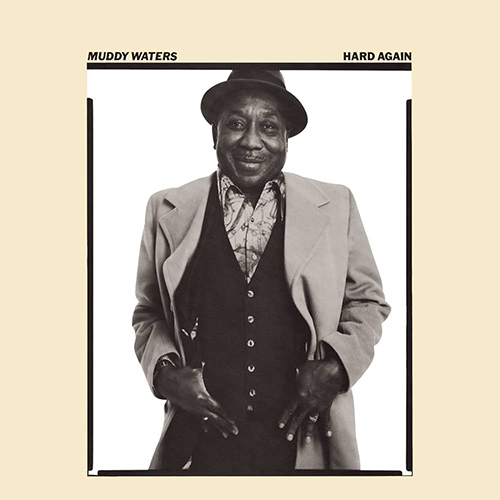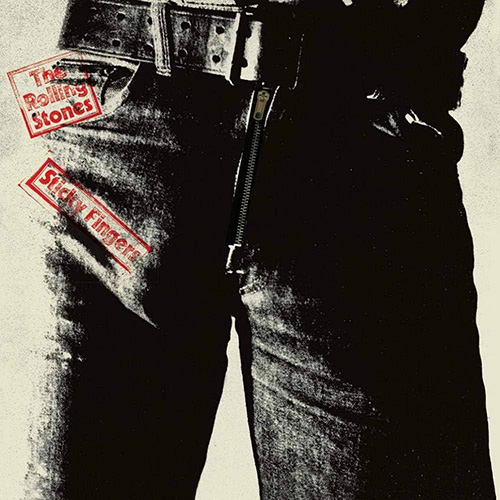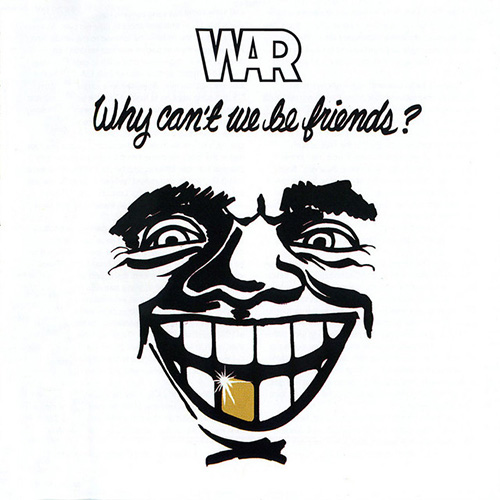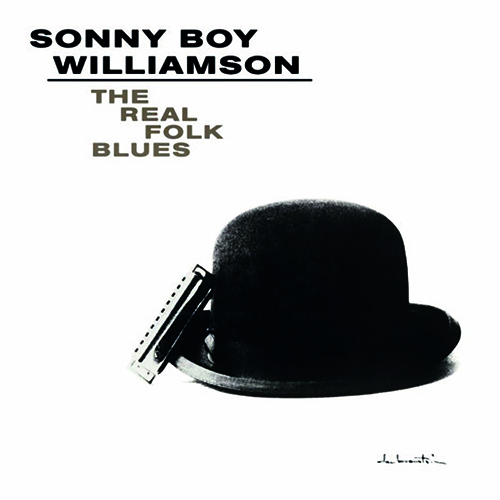In this lesson, I’m gonna share 10 songs that taught me how to play the harmonica.
These songs are ordered from easiest to hardest, and are all done on a C harmonica.
I first learned the harmonica when I was about 16 years old which was….
a long time ago.
My buddy Justin encouraged me to learn. We were both guitar players and blues fanatics, so I was game to give it a go.
I got my first harmonica. I was excited, but then surprised when he said, “yeah, so the best thing to do first is actually to learn some simple children’s songs.” To which I replied:
Ummm….But….Why? 😩
Because it’s good to learn where the notes are on the harmonica, and to get your ear 👂🏼and your brain 🧠 connected to them 🎶, and to work on playing single notes.
💪🏼
“OK,” I replied begrudgingly, “if you’re sure it’s really gonna help me, I guess I’ll do it.”
Once my friend had convinced me to begin learning to play the harmonica by learning a few simple children’s songs, I was surprised by how much fun I actually had figuring them out.
16-year-old Luke couldn’t play single notes at first, so “Mary Had a Little Lamb” sounded like this:
Here are the harmonica tabs in C for this first, easiest, beginner way to play “Mary Had a Little Lamb”, a good one to learn, even if today is your very first day playing the harmonica.
#1Mary Had a Little Lamb
45 -34 34 -34 45 45 45
Ma -ry had a lit-tle lamb
-34 -34 -34 45 56 56
Lit – tle lamb, Lit – tle lamb
45 -34 34 -34 45 45 45
Ma -ry had a lit-tle lamb
45 -34 -34 45 -34 34
Her fleece was white as snow
After I’d been playing the harmonica for several weeks, it started to sound more like this:
Did you hear the difference? I learned to play nice clean single notes by bringing the corners of my mouth closer together and allowing my lips to stay relaxed.
All great harp players know how to play nice clean single notes.
If you haven’t learned how yet, check out my lesson, Single Notes for Beginners.
Here are the harmonica tabs in C for “Mary Had a Little Lamb”:
1b. Mary Had a Little Lamb – Single Notes
5 -4 4 -4 5 5 5
Mary had a little lamb
-4 -4 -4 5 6 6
Little lamb, little lamb
5 -4 4 -4 5 5 5
Mary had a little lamb
5 -4 -4 5 -4 4
Her fleece was white as snow
Here’s just the jam track for you to play along with, using either version of the harmonica tabs to “Mary Had a Little Lamb”, or making up a version that combines both:
Once I was playing single notes, I faced a couple new obstacles with this next song. Here are the harmonica tabs in C for “Row, Row, Row Your Boat”:
#2Row Row Row Your Boat
4 4 4 -4 5
Row, row, row your boat
5 -4 5 -5 6
Gently down the stream
7 7 7 6 6 6 5 5 5 4 4 4
Merrily, merrily, merrily, merrily
6 -5 5 -4 4
Life is but a dream
The first challenge here was the “merrily, merrily, merrily”. I found it difficult to breathe 3 times each on holes 7,6,5, and 4 without running out of breath on the harmonica.
The solution I found to this problem is to use articulations. Let me save you a lot of time experimenting with all kinds of random syllables, and tell you the ones here:
“tuh-tuh-tuh”
or
“duh-duh-duh”
They sound nearly identical, and feel just slightly different.
When you’re evaluating any harmonica technique that you’re working on, remember this:
If it SOUNDS GOOD and it FEELS GOOD, it IS GOOD.
Here’s me playing “Row, Row, Row Your Boat” on harmonica:
And here’s a jam track of “Row, Row, Row Your Boat” for you to play harmonica with, using the tabs above:
The second challenge I faced with Row Your Boat, became even more obvious in the next song, the last nursery rhyme in this lesson before we start getting to the good stuff. 😎
These are the harmonica tabs in C for “Twinkle, Twinkle, Little Star”. (The tabs in blue are notes that I like to bend. Try saying “oo-ee” or “kyuh” for some expression on these notes.)
#3Twinkle Twinkle Little Star
4 4 6 6 -6 -6 6
Twinkle, twinkle little star
-5 -5 5 5 -4 -4 4
How I wonder what you are
6 6 -5 -5 5 5 -4
Up above the world so high
6 6 -5 -5 5 5 -4
Like a diamond in the sky
4 4 6 6 -6 -6 6
Twinkle, twinkle little star
-5 -5 5 5 -4 -4 4
How I wonder what you are
The challenge here is skipping a hole, and the MISTAKE is to take your mouth off the harmonica, look at where hole 6 is, and then try and put your mouth back on the harmonica. That’s a rookie move.
The boss move is to slide, and listen for the right note. Oops I went too far. There it is.
This will teach you the distance, until eventually you won’t have to slide anymore, and you can easily play a melody skipping over a hole on the harmonica. It just takes lots of practice!
Also, because the harmonica is harmonized, you might find it actually sounds really cool sliding, and you might decide to keep that as part of your own personal expression.
Here’s me playing “Twinkle, Twinkle Little Star” on harmonica
And here’s a jam track of “Twinkle, Twinkle Little Star” for you to play harmonica with, using the tabs above:
Using sliding on the next song helped 16-yr-old Luke get to finally flex a bit on the harmonica, playing something at a faster tempo. 💪🏼
Here are the harmonica tabs in C for how I learned to play “Oh Susanna!”.
#4Oh Susanna! (Fast tabs)
4 5 6 6 6 -6 6 5 4
-4 5 5 -4 4 -4
4 5 6 6 6 -6 6 5 4
-4 5 5 -4 -4 4
-5 -5 -6 -6 -6 6 6 5 4 -4
4 5 6 6 6 -6 6 5 4
-4 5 5 -4 -4 4
Since the first 5 notes here are all blows, I could play them pretty fast on the harmonica like this:
- Playing the first 3 notes on 1 breath (on holes 4 5 6)
- And saying “tuh tuh” for the last 2 blow 6’s.
I recently realized that a more accurate beginning of the melody actually has a draw four like this 4 -4 5 6 6.
Now that I’ve been playing a few decades I can play it fast this way too.
But I don’t think I could have played it that way that fast back in the day.
If you prefer playing “Oh Susanna!” this way on the harmonica, here are the harmonica tabs in C for “Oh Susanna!”.
Oh Susanna! (More accurate tabs)
4 -4 5 6 6 -6 6 5 4
-4 5 5 -4 4 -4
4 -4 5 6 6 -6 6 5 4
-4 5 5 -4 -4 4
-5 -5 -6 -6 -6 6 6 5 4 -4
4 5 6 6 6 -6 6 5 4
-4 5 5 -4 -4 4
You may have noticed that I also did something on both of these last 2 songs, on the draw 4’s, 5’s and especially on the 6’s to inject some soulful feeling into it.
Throughout this harmonica lesson, I’ve colored the tabs blue that I like to bend into.
You don’t have to bend into these notes for the melody to sound right, but you might experiment with using these articulations when playing the tabs in blue:
- “kwah”
- “dwah”
- “Kyuh”
- “Oo-ee”
“Oo-ee” is the one I find I’m enjoying on these 1st position kinda folk tunes, in order to get a little bit of soulfulness on draw notes -4, -5, and especially -6.
Here’s me playing “Oh Susanna!” on harmonica:
And here’s a jam track of “Oh Susanna!” for you to play harmonica with, using the harmonica tabs above:
Speaking of a crying soulful sound, at this point in my journey I was still pining to be able to play something bluesy. So I was elated when my friend taught me the next song.
Here are the harmonica tabs for the first bluesy Train Imitation that I ever learned on the harmonica.
#5The Train Imitation
Da’ Whistle
-34 -34
“Dwah Dwah”
Da’ Chug
-123 123 -14 14
“Takata Hoo”
This was the first version of the train imitation that I learned. There are lots of different versions of the train imitation. I teach one of the most popular ones in my Beginner Lesson #1, and I’ll be teaching others in future videos, the one we’re learning here today is one of many songs that I teach step-by-step in my Beginner to Boss harmonica course.
My mama taught me that trains say “chugga chugga” so I’m not sure how “takata-hoo” sounds like a train exactly? 🤷🏻♂️ But I am sure that it’s fun! 😁 Also, it’s great practice because:
“ta-ka-ta” is a useful articulation for 3 fast notes
Next, how the heck do you play holes 1 & 4 but not hole 2 or 3???
I’m glad you asked! 😉
These are what are known as Split-4’s.
To play a Split-4, we block holes 2 & 3 with our tongue, and play just holes 1 and 4 out of either side of our mouth, at the same time.
Holes 1-4 is the easiest place on the harmonica to learn splits. Later on you can apply the technique across the harmonica to increase blues horsepower.
Here’s me playing the bluesy Train Imitation, using the splits on harmonica:
If learning this technique feels overwhelming at this point, you can just breathe in and out on the same chords as you say “Takata Hoo.” Here are the harmonica tabs for the easier way to play a beginner bluesy Train Imitation:
Da’ Chug
-123 123 -123 123
“Takata Hoo”
Here’s a jam track of the bluesy Train Imitation for you to play harmonica with, using either of the harmonica tabs above:
This 2nd version of the train especially is pretty easy, and that’s I was even more excited to learn my first legit single note blues lick.
Here are the harmonica tabs to play the “Crosseyed Cat” riff on the harmonica:
#6Crosseyed Cat by Muddy Waters
-5 5 -4 4 -3 -4
I was a big fan of the Muddy Waters record “Hard Again”, produced by Johnny Winter and the first release on his Blue Sky record label in 1977, so when I learned James Cotton’s lick from “Crosseyed Cat”, I was starting to feel like I could finally play me some blues harmonica! 😎

My favorite part of this lick is SLIDING up into the -5.
As I mentioned before, sliding is a great way to add personal expression to your playing.
Here’s a recording of me playing the riff with the jam track:
And here’s the jam track for you to play along with:
“Crosseyed Cat” is a great beginner blues riff cos it sounds great if you can bend into the -3, but even if you can’t it still sounds cool, and it’s really easy to memorize because it’s just 3 things:
- draw/blow on 5
- draw/blow on 4
- draw 3 to draw 4.
On the other hand, the next song was hard to memorize, and it took me months to figure out both how to play it, and how to remember it.
Here are the harmonica tabs in C for “Ode to Joy” from Beethoven’s 9th Symphony.
#7Beethoven’s 9th Symphony “Ode to Joy”
5 5 -5 6 6 -5 5 -4 4 4 -4 5 5 -4 -4
5 5 -5 6 6 -5 5 -4 4 4 -4 5 -4 4 4
-4 -4 5 4 -4 5 -5 5 4 -4 5 -5 5 -4 4 -4 3
5 5 -5 6 6 -5 5 -4 4 4 -4 5 -4 4 4
Here are the hacks I discovered to memorize this piece:
Hack #1
Notice that the 2nd line repeats the 1st line exactly until the end; only the last 3 notes are different.
The 1st line ends with 5 -4 -4
The 2nd line ends with draw 4 and -4 4 4
Hey, wait a minute, that’s like a question & answer. Like a call & response.
Whoa, Beethoven was like a bluesman actually…

Hack #2
Then notice that the 2nd and 4th lines are identical, we just anticipate the first note of the 4th line, meaning rhythmically it enters a bit earlier.
So once you’ve got the first 2 lines you’re 75% of the way there.
Now we just have to tackle the 3rd line.
Hack #3
The 3rd line uses REPETITION too, and can be broken into 3 parts.
This is a great technique to use when you’re making up your own solos, by the way,
it’s what fancy music theorists like to call
Motivic Development
1️⃣ State the motif, which just means play a musical idea, aka a lick: -4 -4 5 4.
2️⃣ Develop the motif, which means play the lick again, but make a small change to it. In this case just changing 2nd -4 to become a little 5 -5 5 resulting in: -4 5 -5 5 4.
3️⃣ Rinse and repeat. Here we’re playing the lick again but making it longer, the exact same first 4 notes as our 2nd lick, and then just adding 4 more notes: -4 5 -5 5 -4 4 -4 3.
Using repetition like this can help you turn a couple cool licks into a full on blues solo.
Here’s a recording of me playing the riff with the jam track:
And here’s the jam track for you to play along with:
And speaking of a nice long blues, I can still remember exactly where I was the summer my buddy taught me this next song. It was such a revelation for me to get to play a nice long blues.
Here are the harmonica tabs for “You Got to Move”:
#8You Got to Move
-2 -3 4 -4
-4 -4 -4’ -3 -2 -3
-4 -4 -4 -4 4
-4 -3 -3 -2
-1 2 -2 -3
-3 -2 2 -1
-2 -2 2 -2
You Gotta Move is an old African American spiritual popularized by Mississippi Fred McDowell in the 1940’s, and then further popularized by the Rolling Stones in 1971.

If these single notes and bends are over your head right now, I also made a super-simple version of this for the harmonica – it’s the 5th song in my 5 Stupidly Simple Harmonica Riffs lesson.
In addition to the bends I’ve indicated in blue, you may have noticed I’m also using some wavering sounds in this song.
Tremolo: a fluctuation in volume
Vibrato: a fluctuation in pitch
At the end of the 3rd line, the blow 4 doesn’t bend, so we can put some tremolo on it using the “coughing effect” which are, guttural sounds at the back of the throat as if you were imitating a sheep 🐑 or a monkey 🐒.
At the end of the 4th line, the -2 does bend, so we can put some vibrato on it.
Now I wasn’t doing this when I was 16, but I wish someone had showed it to me back then so here we go!
To achieve a vibrato, it’s that same coughing technique but on the blow 4, but this time it’s on a draw, inhaling guttural movements.
Luke, you say, that’s so much harder than it is on exhale.
To which I say, “Correct!” It’s awkward as hell. I wish it wasn’t, but it is. There you have it.
Now while you’re doing that, slowly bring the back of the tongue up into the “Kk” zone, the mouth position we use for bending – I’ll take it too far so you can see how to go about experimenting with this technique.
Here’s a recording of me playing the riff using tremolo and vibrato:
And here’s the jam track for you to play along with:
If you need more work on your draw 2 bends, this next song will give it to you.
Here are the harmonica tabs to “Low Rider”:
#9Low Rider
-3 -3 -3 -3 -3 4 -4
3 -3 4 -3 3 (Repeat)
-2” -2” -2” -2” -2” -2”
-2” -2” -2” -2” -2” -2”
-2” -2
“Low Rider” from the band War, with the iconic hook played by Lee Oskar on the harmonica off of there 1975 album release, Why Can’t We Be Friends.

I’ve got this at song #9 because of the those draw 2 whole-step bends.
When you’re working on your draw 2 whole-step bend, the bend-it-better tool can be helpful for getting visual feedback on how close you are to getting the full bend.
And once you can get the bend, then we want to pay very close attention to our mouth position and stop the airflow without changing our mouth position, and then start it again.
Because the back of our tongue is in the “Kk” Zone,
the syllable
“Kuh”
is very natural
for articulating this bent note
multiple times in a row, as we do for 2 sets of 5 in this song.
Here’s a recording of me demonstrating how to play “Low Rider” on harmonica:
And here’s the “Low Rider” jam track for you to play along with:
You’ll notice the last note gets louder over time. The musical term for this is crescendo, it’s a great way to add excitement to a long note.
We’ve made it to song #10! Here are the harmonica tabs to “Peach Tree” by Sonny Boy Williamson:
#10Peach Tree
-2 2 -2 -3 4 -4’ -4
-2 2 -2 -3 -3 -2 2 -1 (2)
-2 2 -2 -3 4 -4’
-4 -4 4 -4 -3 -2 2 -1 2 -2 -2
From the album The Real Folk Blues, the song “Peach Tree” off of this record is great cos it’s a whole tune like “You Gotta Move”, but played by one of Blues Harmonica’s legends, Mr. Rice Miller, aka Sonny Boy Williamson II.

On the last line when I’m bending up into the draw 4 twice at the beginning, and the draw 2 twice at the end, I feel like I’m saying “kwuh kwuh” on those.
Listen for it in this recording of me playing harmonica on “Peach Tree” by Sonny Boy Williamson:
And here’s the jam track for you to play along with:
I have this as one of the hardest songs of the lesson because we really need to be able to play the bent draw 4 in time: 4 -4’ -4
Another great way to practice your bends in time is simply to practice the blues scale, which I cover in this lesson. Go test yo’ self!
Questions? Comments? Drop ‘em below. Let me know how I can help you along with your journey, and never stop playing the harmonica because it really does make the world a better place!

Comments
Got something to say? Post a comment below.